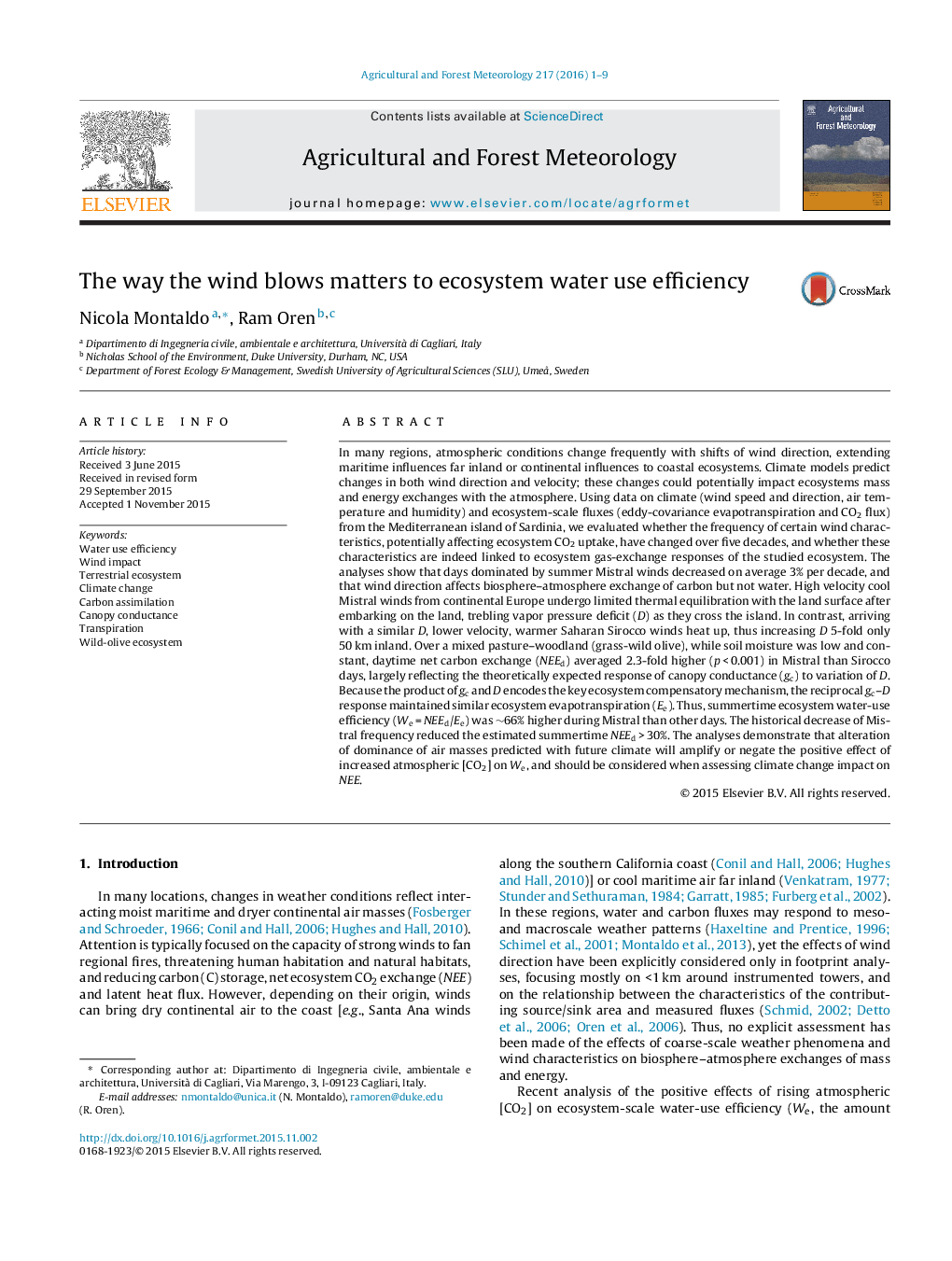| کد مقاله | کد نشریه | سال انتشار | مقاله انگلیسی | نسخه تمام متن |
|---|---|---|---|---|
| 81387 | 158314 | 2016 | 9 صفحه PDF | دانلود رایگان |
• Sardinian summer Mistral wind-days are decreasing and Saharan Sirocco days increasing.
• Fast Mistral winds keep vapor pressure deficit (D) lower than slower Sirocco winds.
• Stomatal response to D keeps ecosystem transpiration similar in both wind conditions.
• The same response halves net ecosystem carbon exchange (NEE) in non-Mistral days.
• Predictions of future NEE should account for changes in coarse-scale, air mass circulation.
In many regions, atmospheric conditions change frequently with shifts of wind direction, extending maritime influences far inland or continental influences to coastal ecosystems. Climate models predict changes in both wind direction and velocity; these changes could potentially impact ecosystems mass and energy exchanges with the atmosphere. Using data on climate (wind speed and direction, air temperature and humidity) and ecosystem-scale fluxes (eddy-covariance evapotranspiration and CO2 flux) from the Mediterranean island of Sardinia, we evaluated whether the frequency of certain wind characteristics, potentially affecting ecosystem CO2 uptake, have changed over five decades, and whether these characteristics are indeed linked to ecosystem gas-exchange responses of the studied ecosystem. The analyses show that days dominated by summer Mistral winds decreased on average 3% per decade, and that wind direction affects biosphere–atmosphere exchange of carbon but not water. High velocity cool Mistral winds from continental Europe undergo limited thermal equilibration with the land surface after embarking on the land, trebling vapor pressure deficit (D) as they cross the island. In contrast, arriving with a similar D, lower velocity, warmer Saharan Sirocco winds heat up, thus increasing D 5-fold only 50 km inland. Over a mixed pasture–woodland (grass-wild olive), while soil moisture was low and constant, daytime net carbon exchange (NEEd) averaged 2.3-fold higher (p < 0.001) in Mistral than Sirocco days, largely reflecting the theoretically expected response of canopy conductance (gc) to variation of D. Because the product of gc and D encodes the key ecosystem compensatory mechanism, the reciprocal gc–D response maintained similar ecosystem evapotranspiration (Ee). Thus, summertime ecosystem water-use efficiency (We = NEEd/Ee) was ∼66% higher during Mistral than other days. The historical decrease of Mistral frequency reduced the estimated summertime NEEd > 30%. The analyses demonstrate that alteration of dominance of air masses predicted with future climate will amplify or negate the positive effect of increased atmospheric [CO2] on We, and should be considered when assessing climate change impact on NEE.
Journal: Agricultural and Forest Meteorology - Volume 217, 15 February 2016, Pages 1–9
